Archives
now browsing by author
Lakagigar – F206 / F207
Here we are to discover the Lakagigar region, driving our first “F Roads”, trails reserved for 4×4 because of deep fords and “in principles”
prohibited to rental vehicles. In principle because we saw many “unauthorized” rental SUV on these tracks.
1. F206
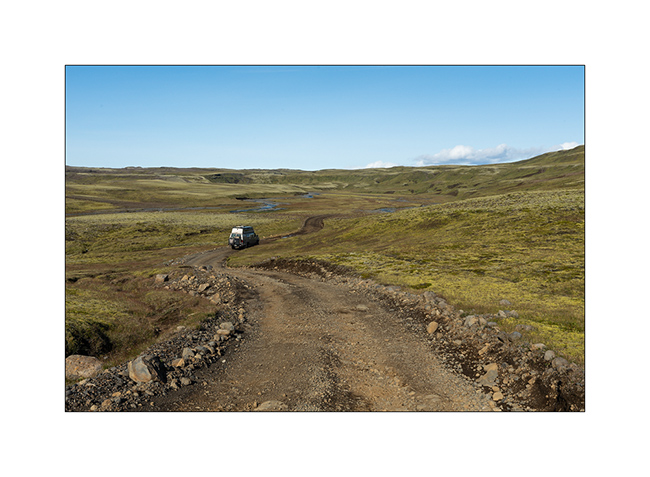
2. As in the Faroe Islands, sheep live in freedom everywhere.

3. VivaLaVida crosses completely mineral landscapes.

4. Here is the Lakagigar range, volcanoes that appeared only a few decades ago.

5. Small lake stuck between mountain and lava flow.

6. The F206 was created in the lava.

7. Only mosses and lichens manage to develop on volcanic slags.
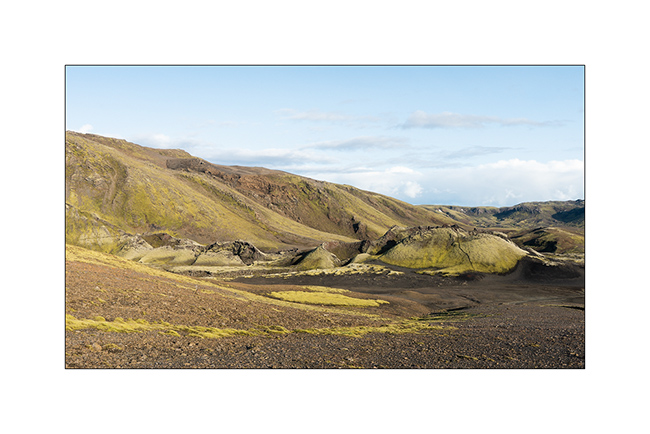
8. The summits, more exposed, are often virgin of vegetation.

9. Enjoying the panorama in late afternoon.
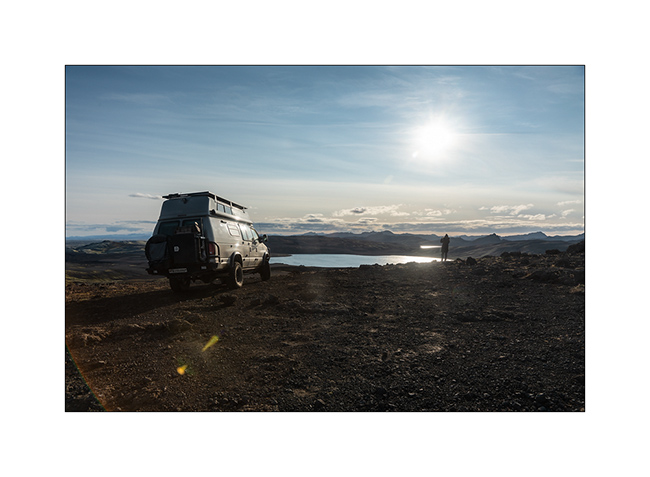
10. And what a panorama!
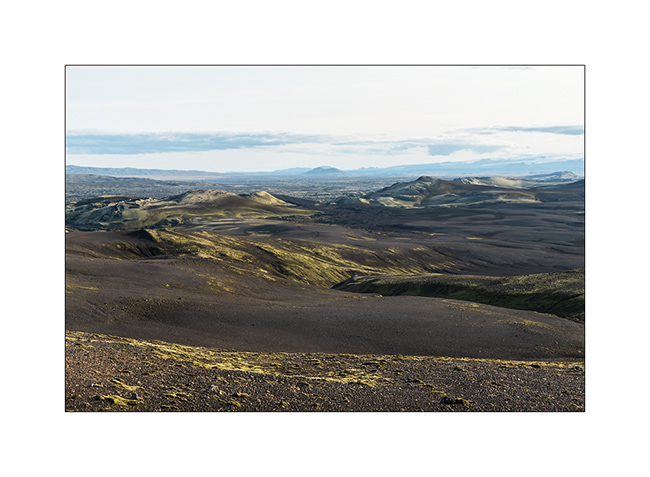
11. F207

12. We boondocked on the shore of a small lake.

13. Sweetness of the evening light.
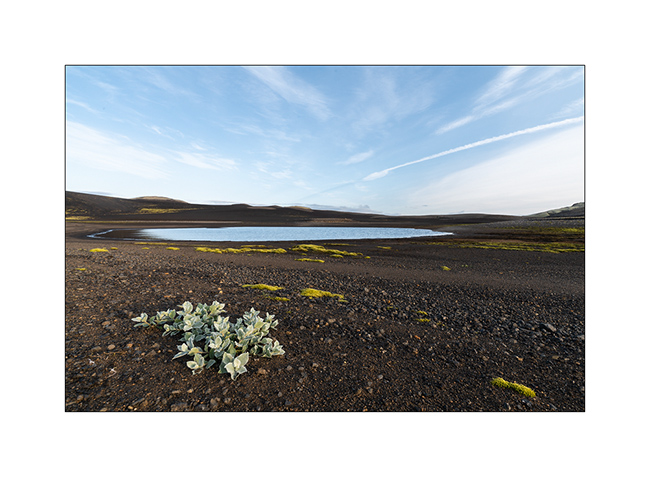
14. The next day, despite the light of a gray sky, the contrasts are amazing. The moss looks almost fluorescent.
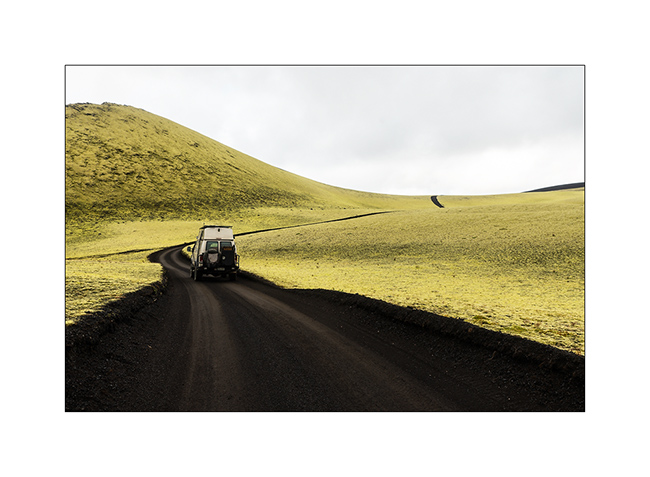
15. …
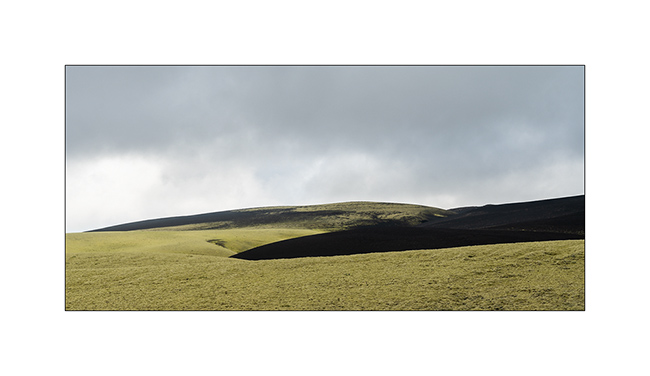
16. …
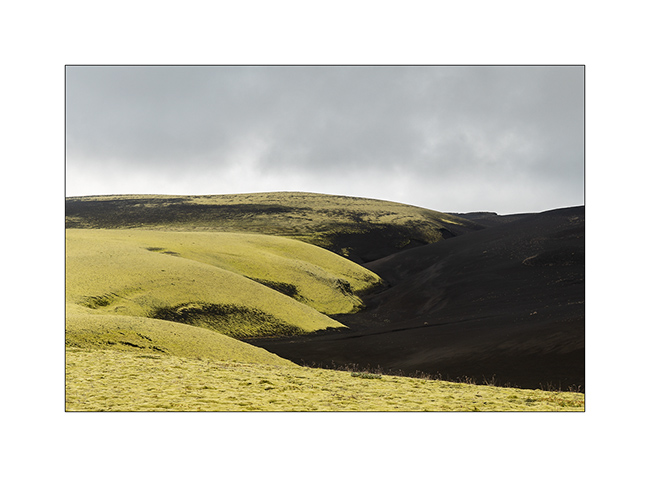
17. Laki volcano.
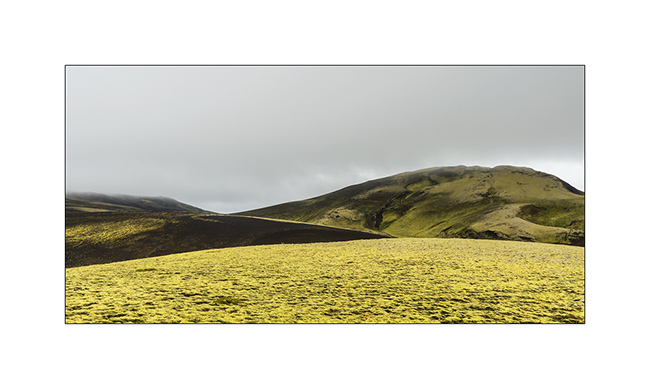
18. … and one of the new craters around.

19. The F207 winds between the hills.

20. Raw lava.
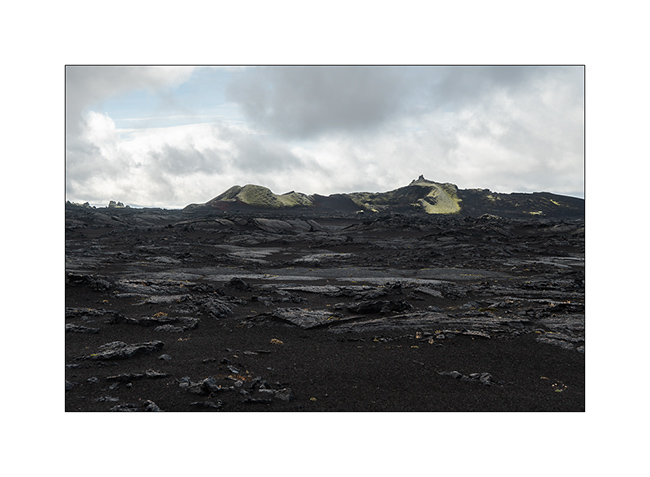
21. Ground is very dark.

22. The trail is sometimes not very marked.

23. Looking to North West towards Landmannalaugar.

24. …

25. Crossing a river with water temperated by some hot springs, the vegetation changes.

I posted a short video of a F207 ford here for those interested. 😉
26. The Fragifoss waterfall along the F206.

27. Last sight of these pretty volcanic hills.

To be followred on the side of the famous Landmannalaugar, probably the most visited interior site in Iceland.
South coast…
1. As Gaël requested it, here is the whole family. 😀
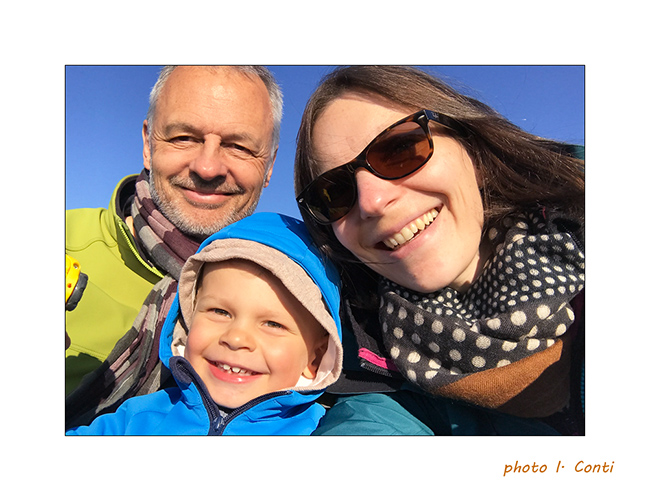
2. An example of the language at the checkout of a store, inapprehensible and unpronounceable for us.
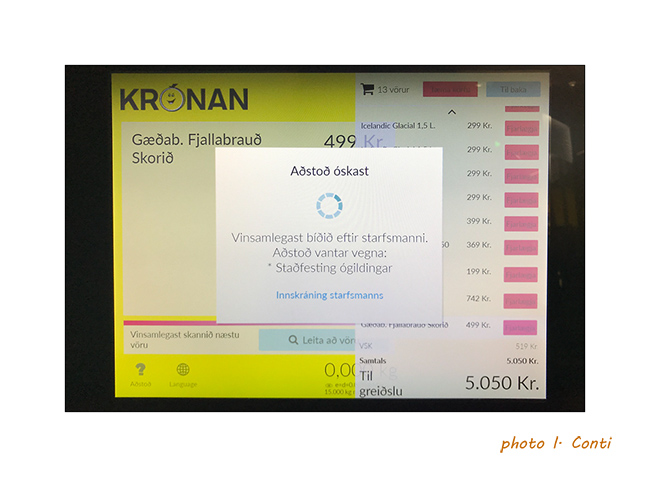
And to show you what the rain can be there, here is a short video
of Isabelle made the day before where it rained like that almost all day long..!
3. Continuation of the South Coast to the East. VivaLaVida crosses many Gravel Bars, large river beds that regular floods clear of all
vegetation.

4. Showers that offer beautiful skies.

5. Waterfall Foss á Síðu along road Nb 1.

6. Rainbow in frontof the Vatnajökull ice cap in the distance.

7. Another one to celebrate VivaLaVida.

8. Gravel bar.
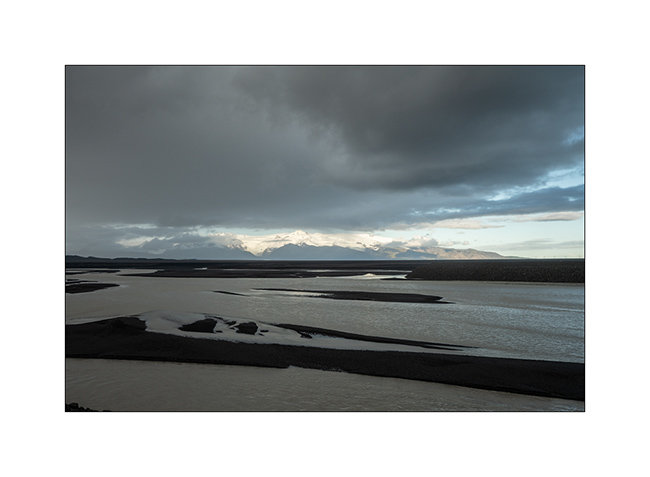
9. Shower on the coast.
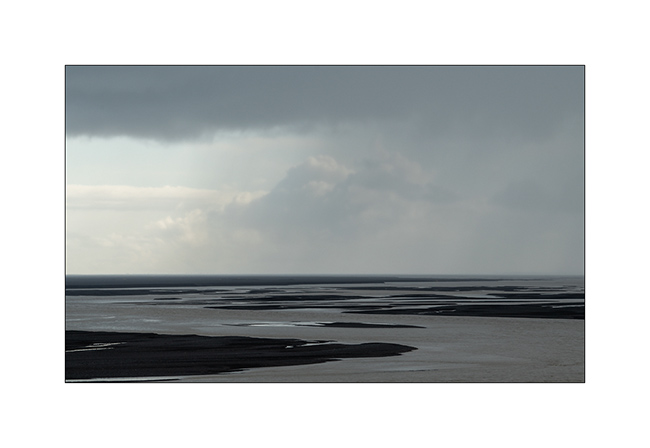
10. Vatnajökull ice cap, the largest in Iceland.
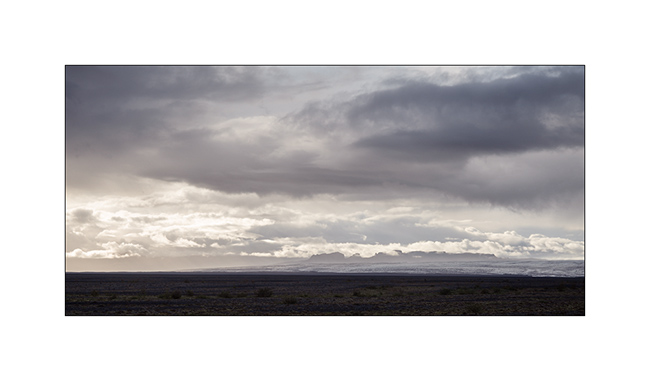
11. It is crossed by many volcanoes more or less active.
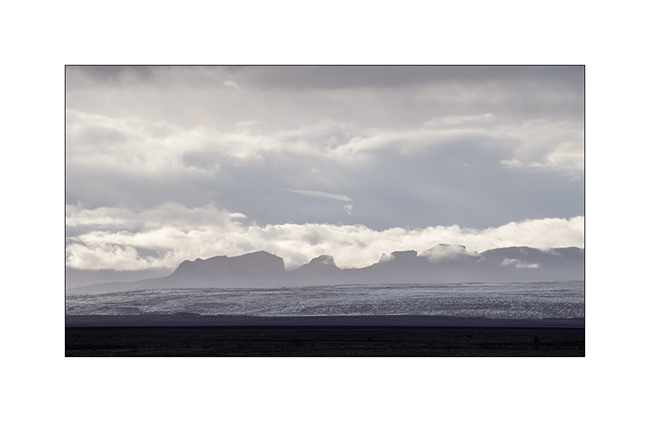
12. In the evening, VivaLaVida finds a nice boondocking place to camp near a glacial lake.
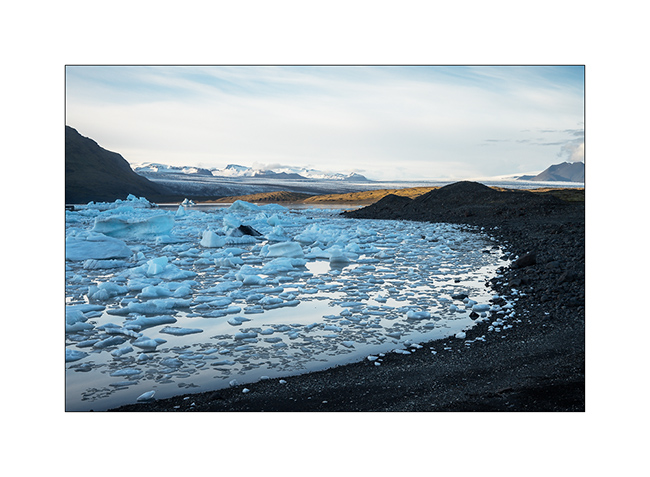
13. First colors at dawn.

14. Camp of VivaLaVida, close to the glaciers.
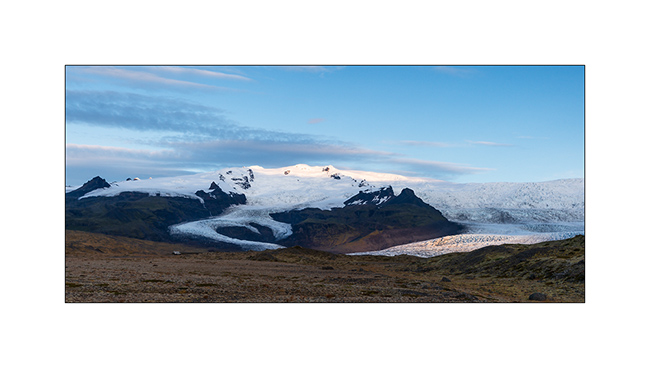
15. Light beams…
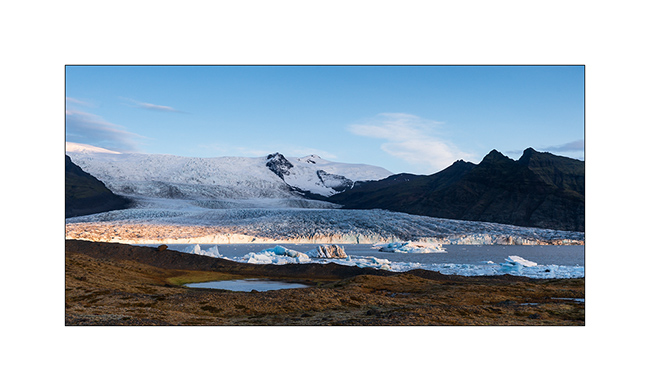
16. … on raw elements.
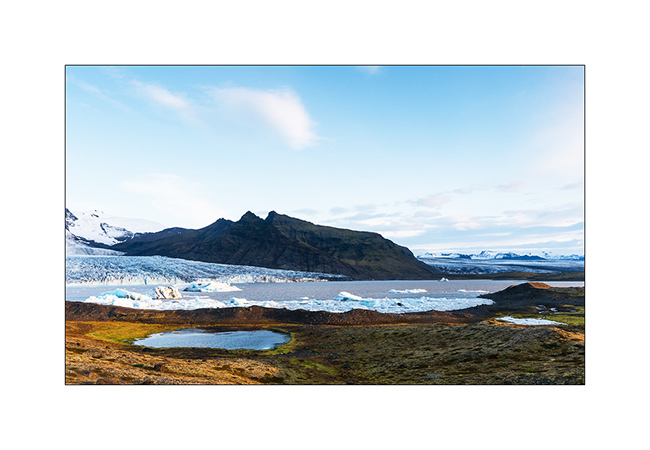
17. I couldn’t not show to Isabelle, a jewel fan, the “Diamond Beach”, famous for the icebergs that stand out from the Vatnajökull and flow
into the ocean by Lake Jökulsárlón before stranding on the black beach! 😉

18. Photo souvenir…
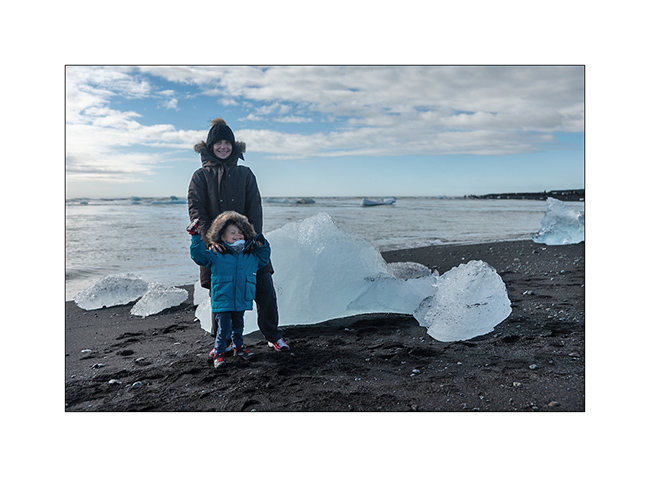
19. Jökulsárlón Lake.
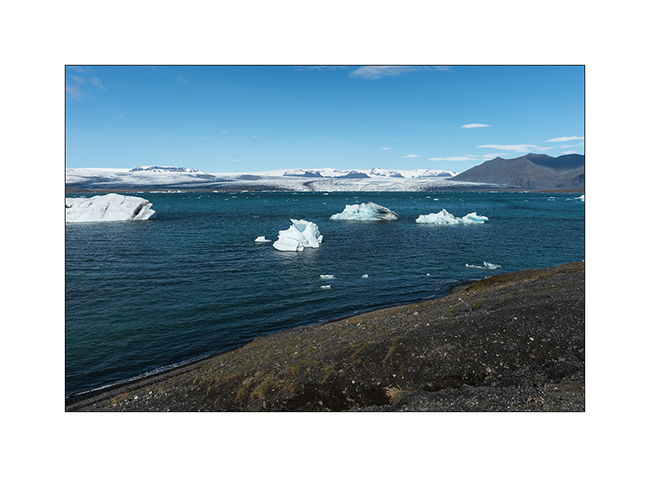
20. Larger icebergs must melt before crossing the channel leading to the ocean.
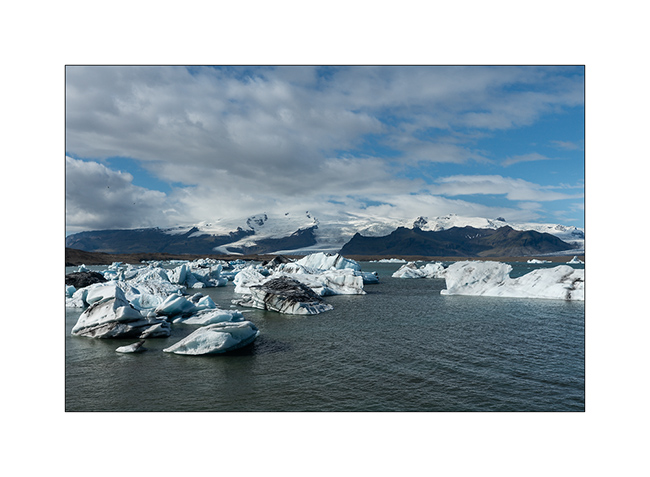
In the next update, we will leave the coast to discover the Lakagigar area where new small volcanoes appeared only some decades ago.
First steps with family
My passengers well landed, we discovered the Reykjanes peninsula together before going to Reykjavik the next day to buy warm jackets to Isabelle and Emile.
1. Volcanic activity is strong on this promontory.
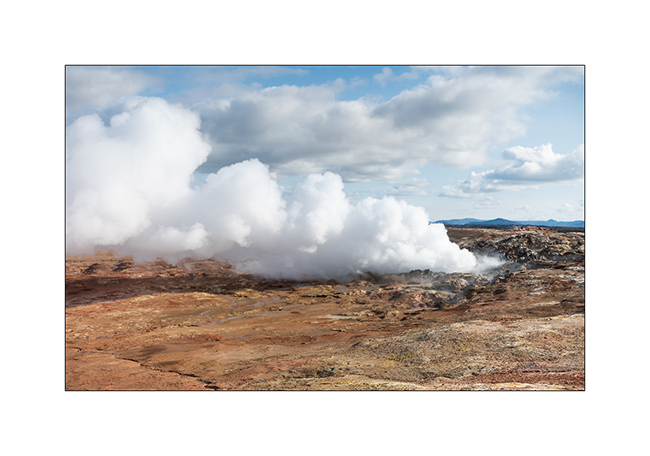
2. Emile is so happy to be back in “Dad’s truck”!
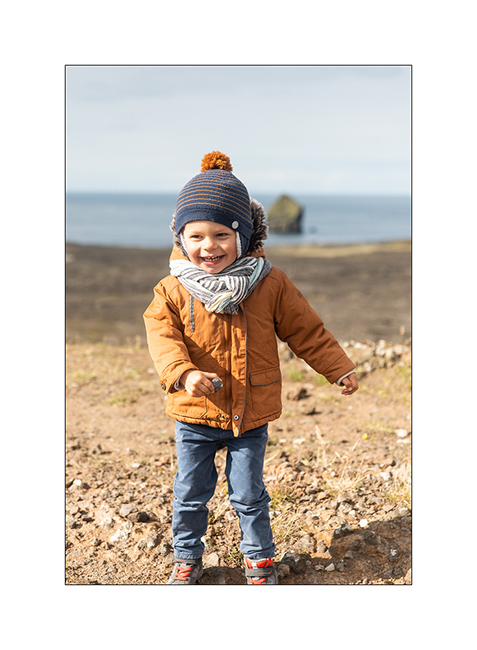
3. The lava that flowed to the sea creates beautiful cliffs.

4. Beautiful lake of Kleifarvatn.
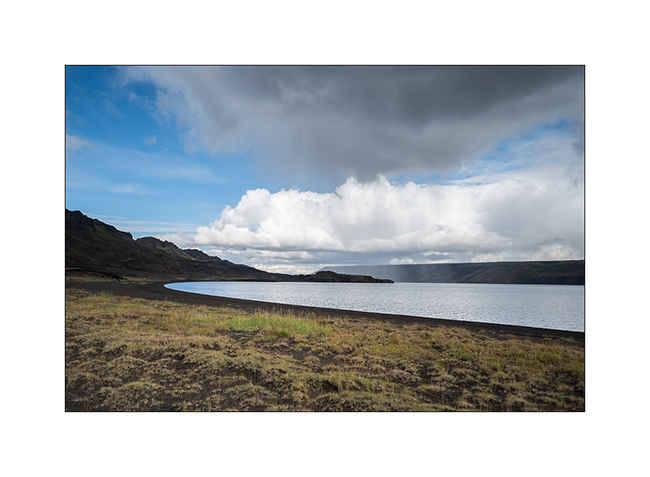
5. Despite some showers, the weather is rather beautiful but a little cold, about 46F.
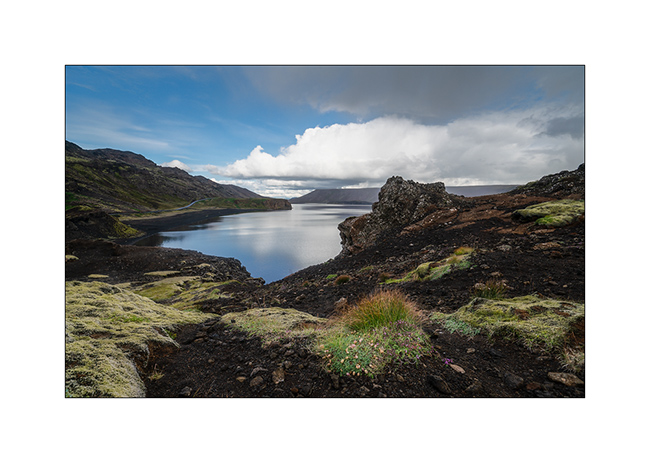
6. Lava fields covered with moss and lichen.
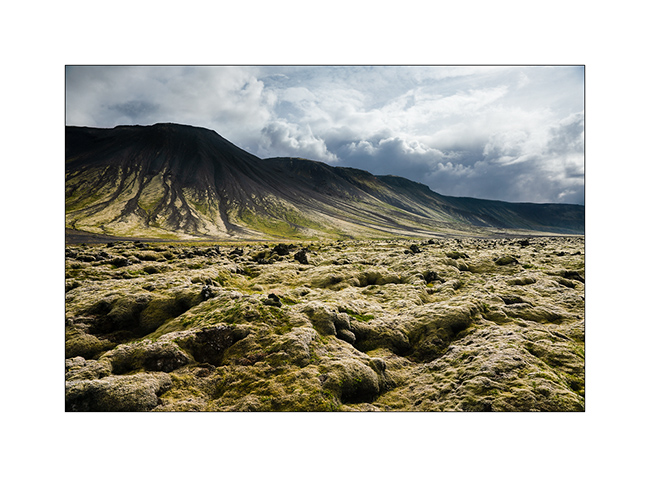
7. Iceland is undoubtedly the land of rainbows. 😉

8. Lava tunnel.
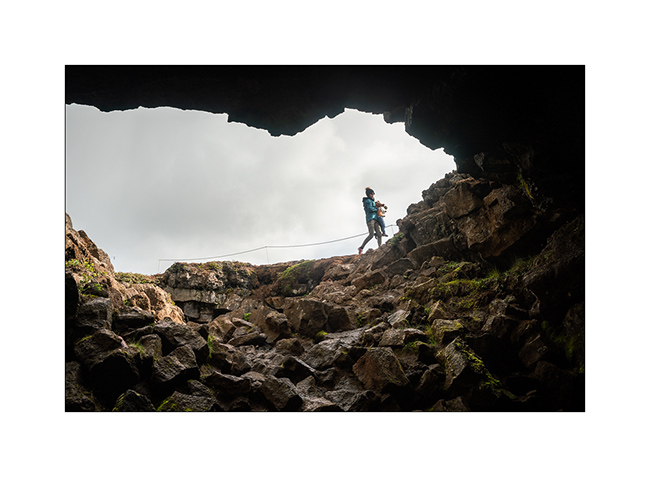
9. There are many here.
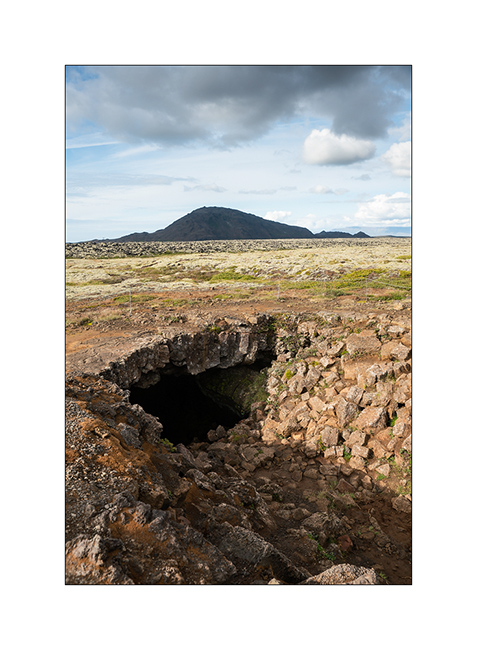
10. Assembly of 5 vertical images to show you a crater that appeared only a few hundred years ago.
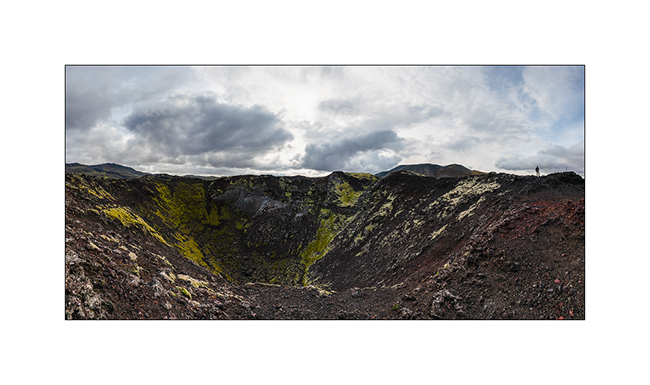
11. After some shopping in Reykjavik, we had a very rainy day stretching the road on the South coast. We cross famous vehicles transformed to ride on the snow. Here, a van similar to VivaLaVida but mounted on huge wheels! VLV looks small compared.

12. The small church of Vik.

13. Dyrhólaey Promontory and its two natural arches.
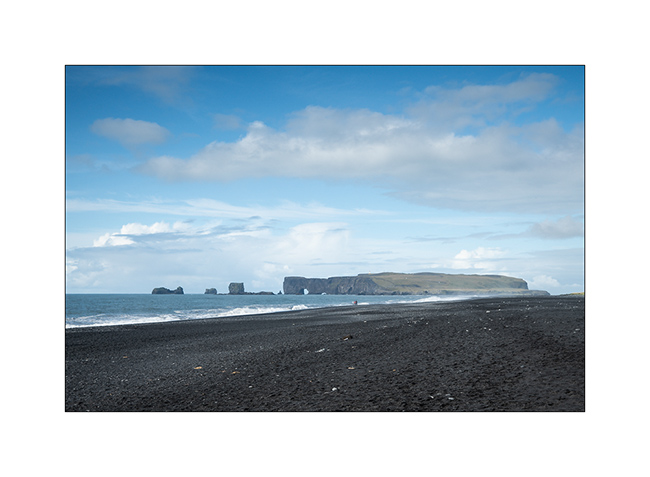
14. Even if the site is very touristy, we take a walk to the Reynisfjara Beach and its needles.

15. Souvenir on the famous basalt pillars.
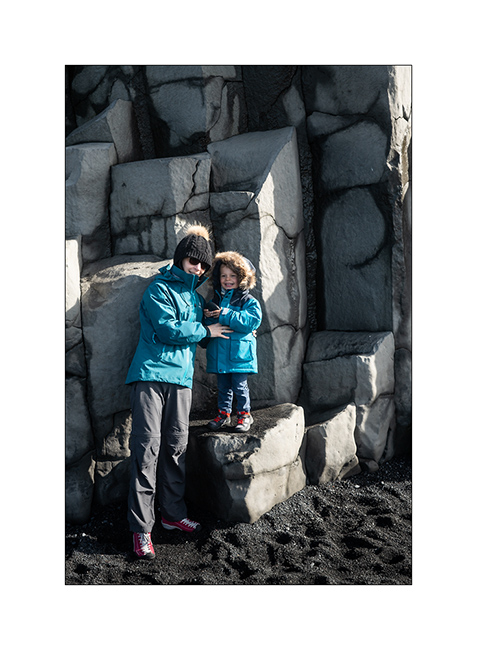
16. Dyrhólaey Beach.
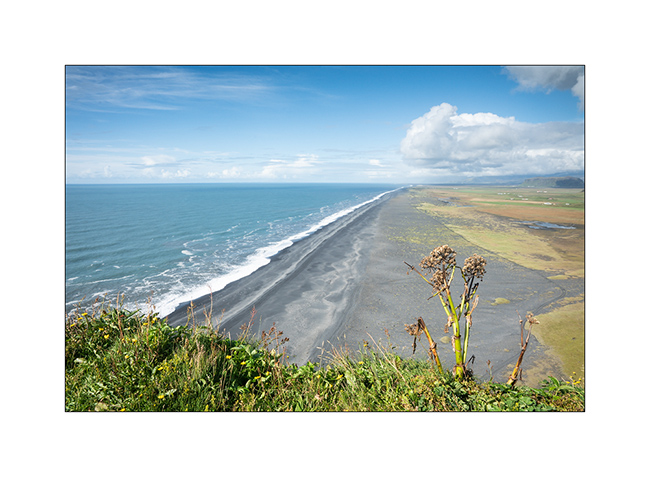
17. On the other side, Reynisfjara.

More of the South Coast in the next update…
Crossing and first steps in Iceland
1. Here arrives the ferry that connects Denmark to Iceland, serving the Faroes.
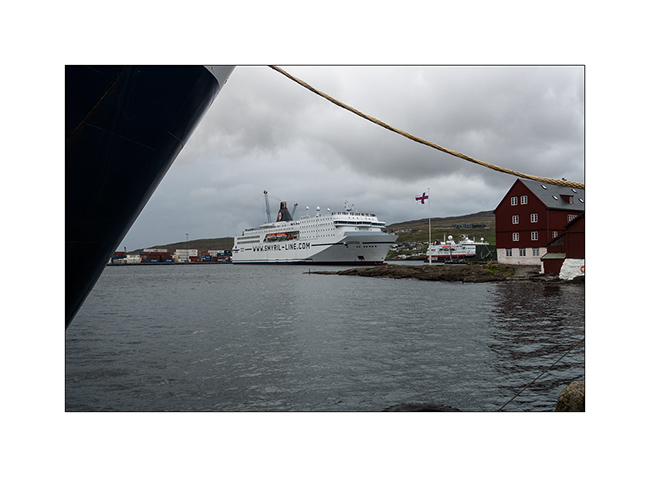
2. Barely moored as the rear port opens to let out the arrivals before VivaLaVida embarks…
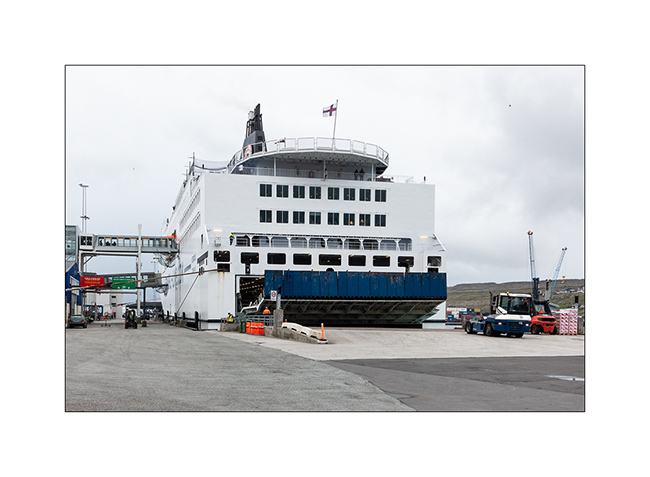
3. Honeymoon on the boarding park! 😉 I will meet the owners of this beautiful Land Cruiser, Kambiz and Filiz, aboard and meet them several times in Iceland.
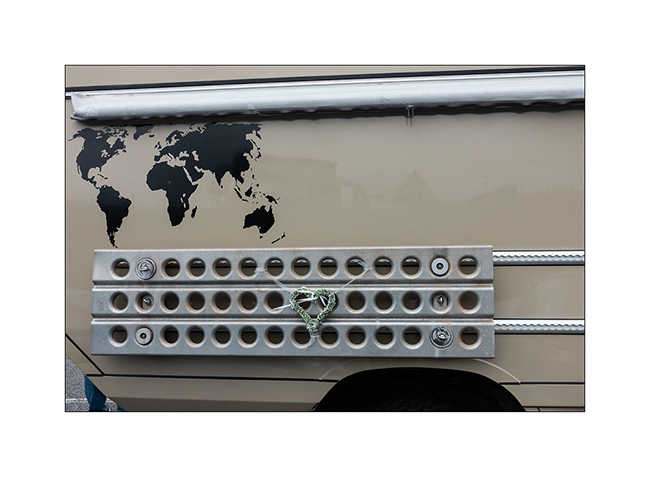
4. From Tornhavn to Iceland, the ferry passes between the islands of the archipelago.

5. So I went in front of Gjógv again, off the coast this time.
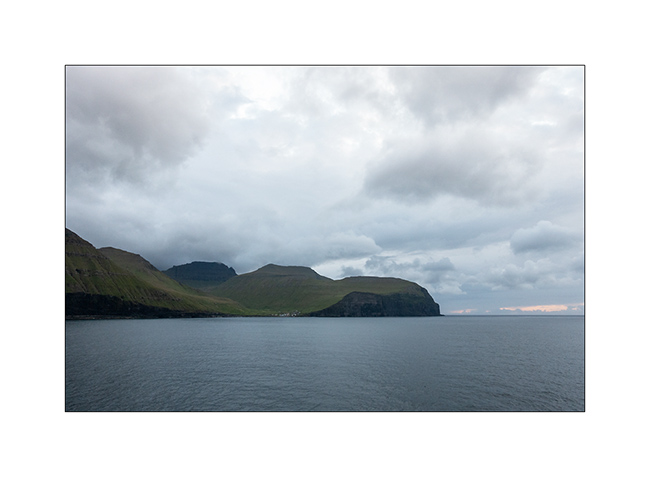
6. Last look before the high seas.

7. The next morning, arrival at Seydisfjordúr, a fjord all teh way East of Iceland. The weather is rainy.
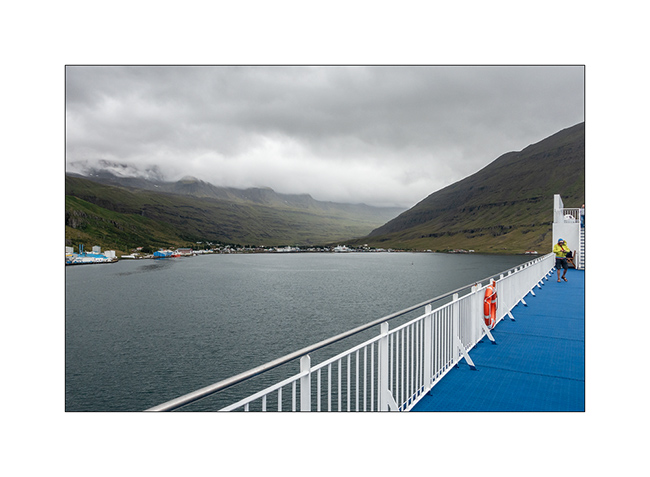
8. En route to pick up my family at the airport in Reykjavik, at the other end of the island or more than 500 miles away, VivaLaVida is quickly in the Highlands that fall colors have already yellowed.

9. These highlands are covered by a few roads or tracks.

10. Ambiance.

11. Canyon.
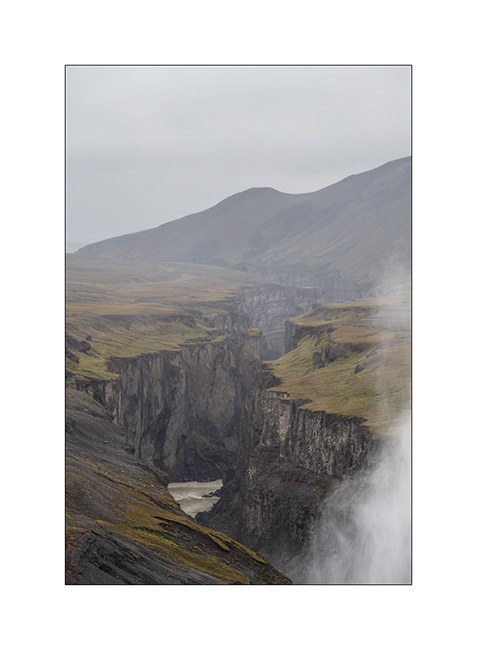
12. Rain showers.
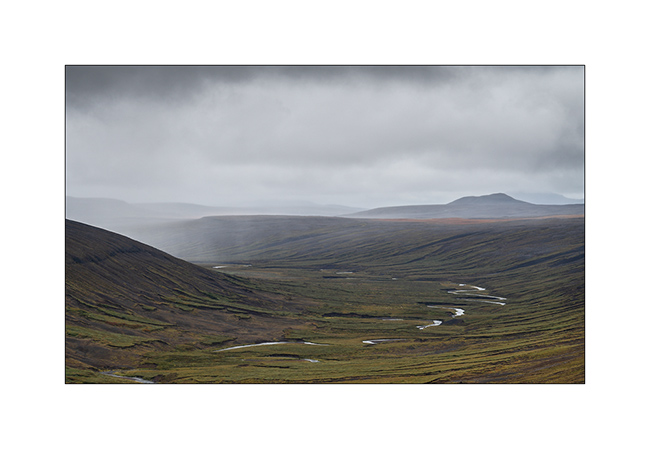
13. Volcanic geology is omnipresent.
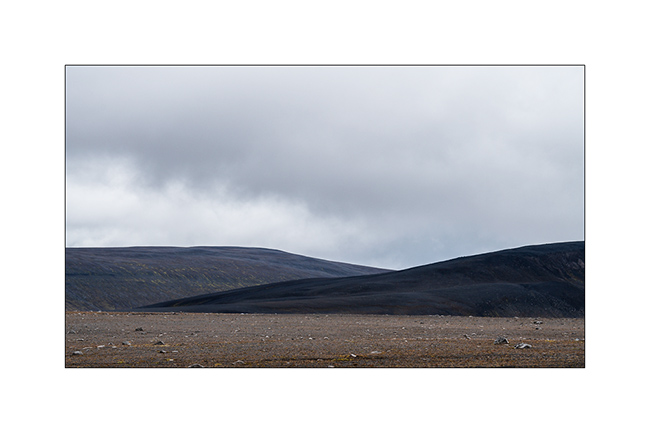
14. Here, water has no choice but to run on soils that are mostly free of all humus.
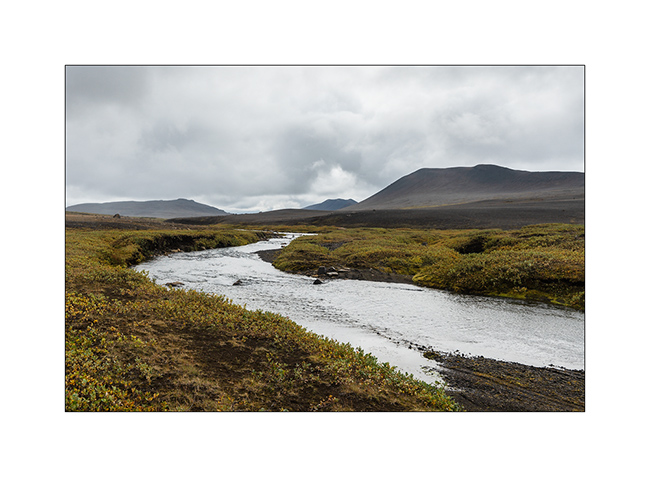
15. Perspectives are immense.
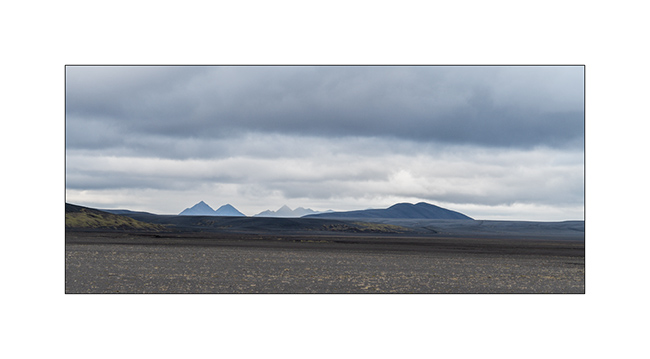
16. I find by chance Kambiz and Filiz on the track, in front of their first serious river ford, waiting for a vehicle to pass and show them the way. VivalaVida passes and I make some souvenir pictures.
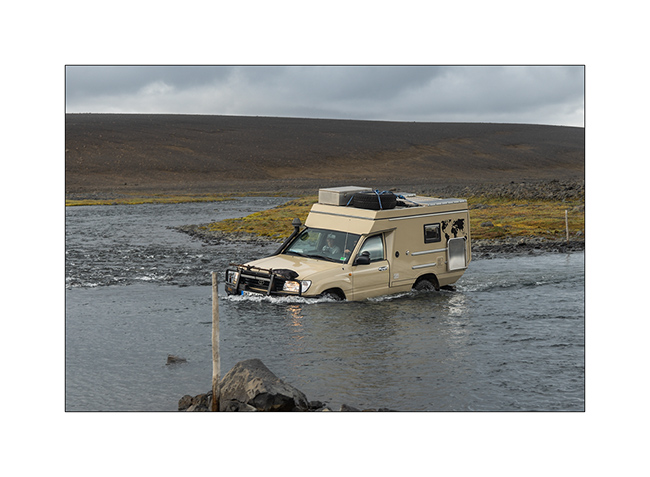
17. Powerfull river carving its way in the basalt.

18. VLV crossing a lava field.

19. Natural pool shortly before night stop…
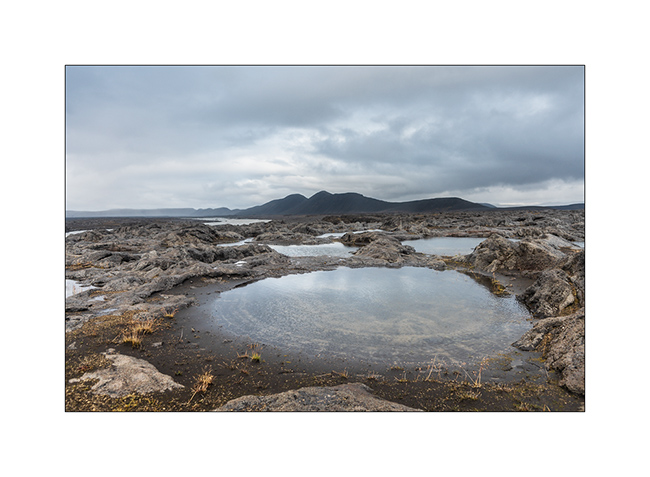
Well, that’s what I though. By switching on the freshly revised VLV heater, the dashboard displays an error code: defective hot air fan which has just been replaced pre-emptively in Switzerland. It is Thursday night, Isabelle and Emile arrive on Saturday and the only place I can repair is Reykjavik, 500 miles away. I decided to drive at night to be in Reykjavik on Friday. 400 miles until around 3am where I take a 4 hour nap. Arrived Friday morning in Reykjavik, I bring the heating to the Webasto dealer after 2:30 of work to get it out since it is well hidden under the rear cabinet of VLV. The technician discovers that during the work in Switzerland, a wiring harness has not been well attached and is hindering the movement of the fan. After a bill of more than 1’600.- Swiss francs, I was not very happy. But at least, the heating works for the arrival of my passengers tomorrow!
Soon to be followed.
Faroe (IV)
As announced, here is the latest update on the Faroes with some images of the old town of Tórshavn, the “Capital” of the Faroe Islands, an autonomous archipelago of Denmark.
1. The old town is located on a rocky outcrop, sort of peninsula in the harbor.
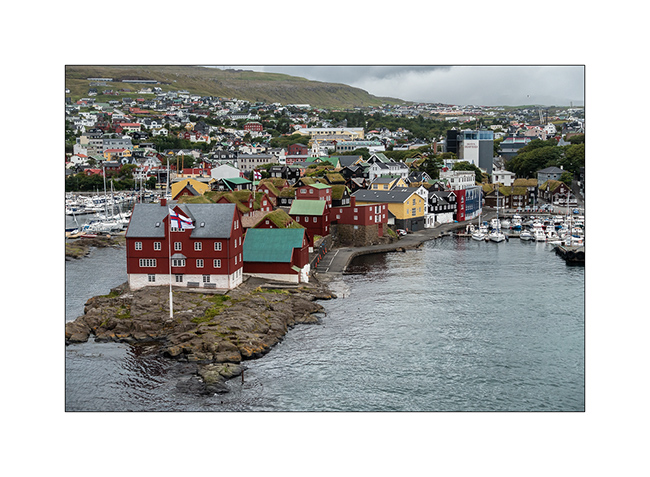
2. There are many traditional houses with their roof covered with moss and grass.
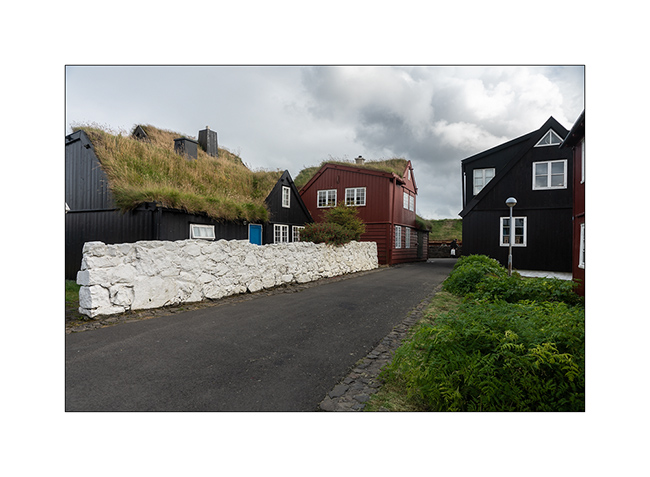
3. “Tiny house” 😉
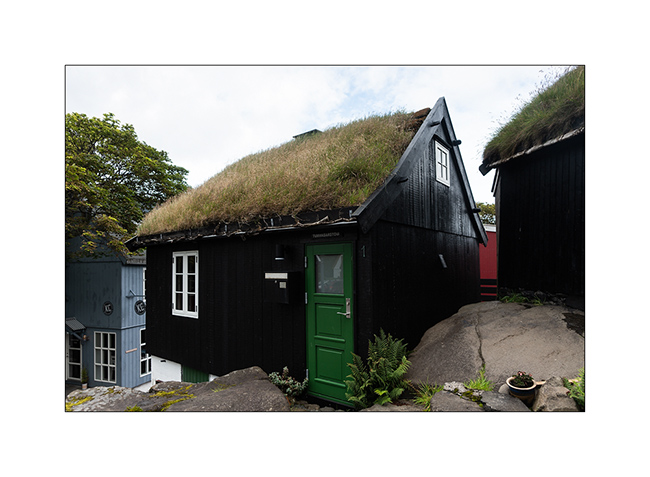
4. Alley.

5. The church…

6. … Sober inside.

7. …

8. The oldest part.

9. Entrance…

10. The marina and its lively pediment.

11. Twilight from the VLV camp.

12. Sheep are everywhere and live in freedom.
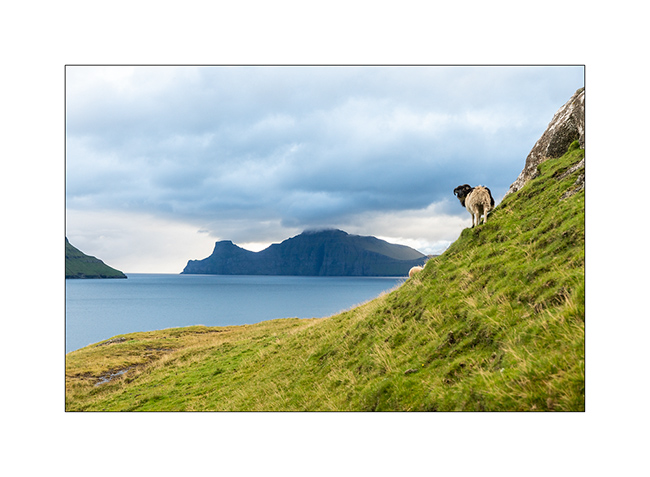
13. Some have escaped mowing for some time!

14. There are many who are all or partially dark.
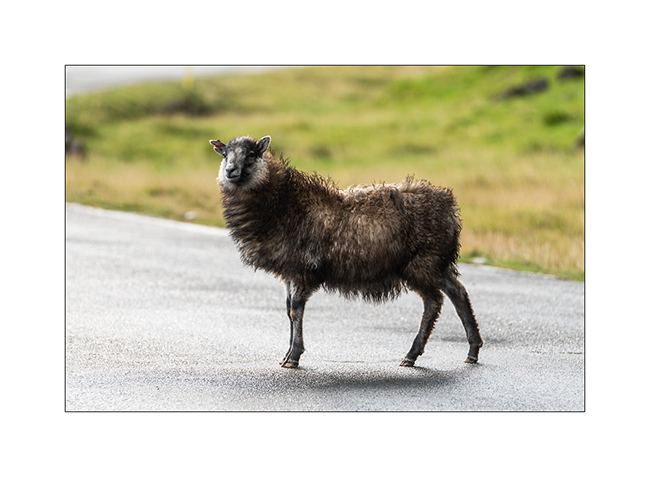
15. Karsoy Island in the morning.

To be followed in a few days with the crossing to Iceland by ferry. Thank you for following us. 😉
Faroes (III)
Let’s continue the journeye…
1. Arriving in Tjornuvik, another isolated village known for its black sand beach, one of the very few beaches of the Faroes. The place is famous for surfing because the bay opens on the North Atlantic and have big waves when it’s windy.
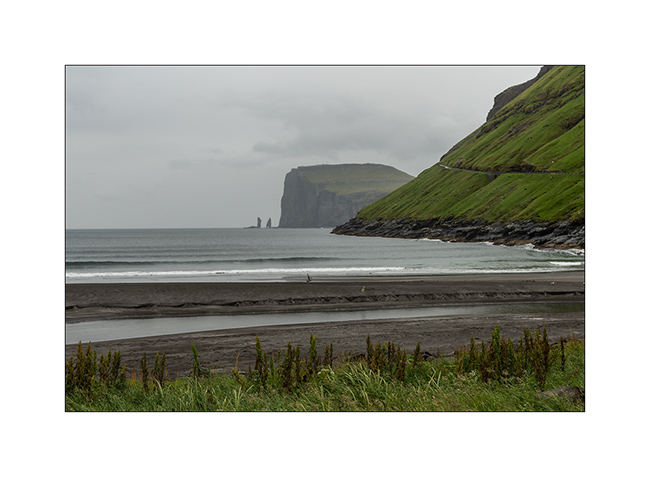
2. The village is nestled at the bottom of the bay.
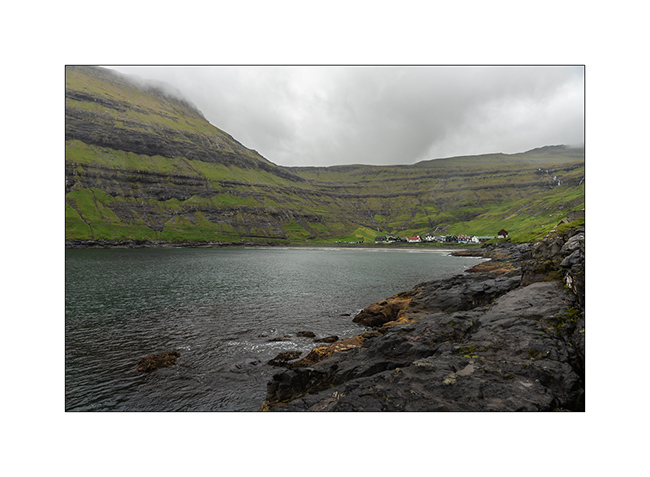
3. Overview as the rain doubles.

4. Here’s something I hadn’t seen before: a method to dry the hay that will feed the sheeps during the winter. As it rains all the time, it is arranged in walls. The constant wind prevents the grass from rotting and allows it to dry.
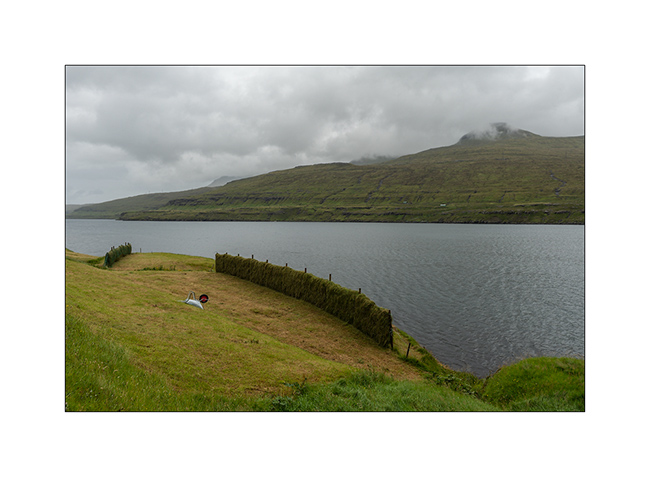
5. Rest zone!
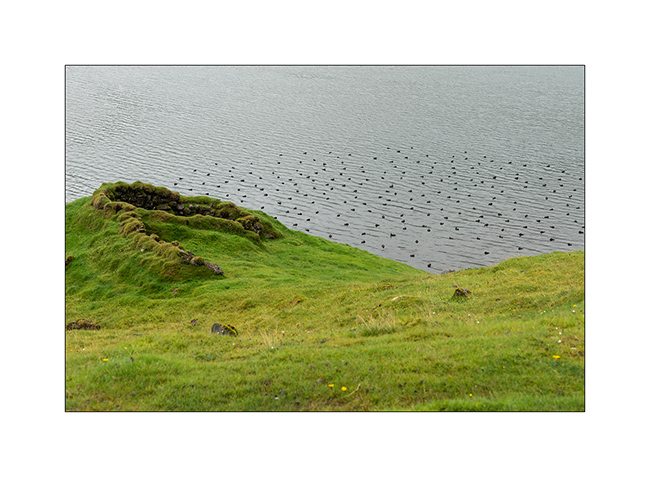
6. Little pass on the way to Gjógv.
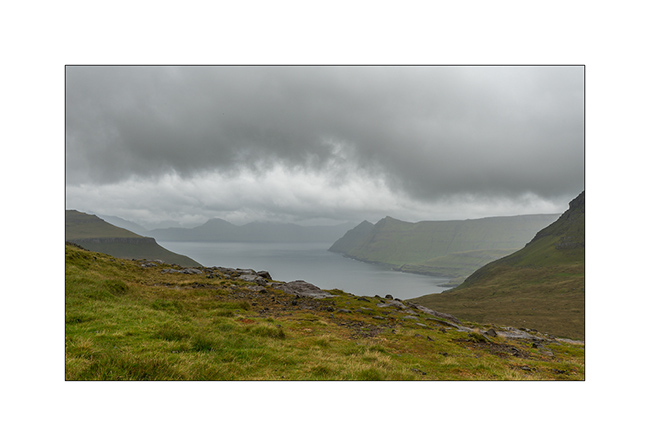
7. Arriving at the village, still in the rain.

8. It has a privileged natural shelter.
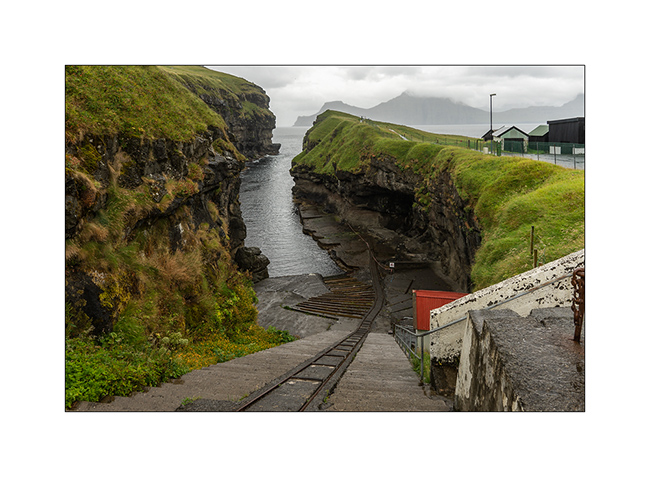
9. Traditional houses…
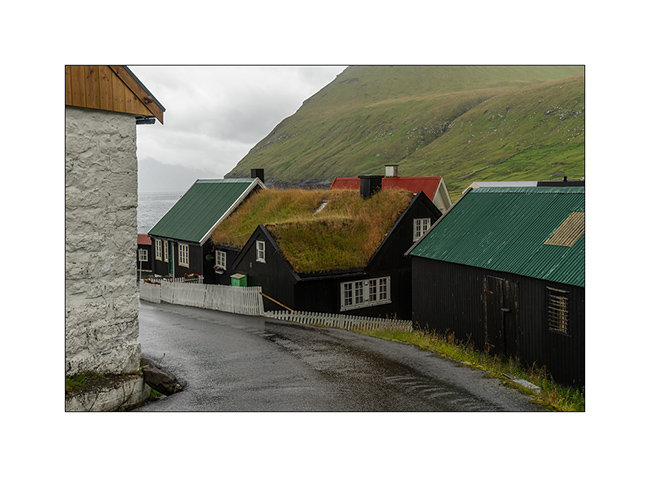
10. …
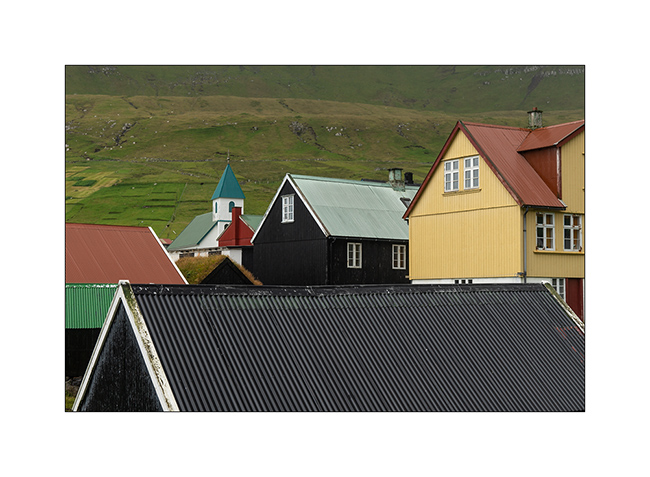
11. Last seen before leaving…

Because three days pass quickly, the next article will introduce you to the old city of Tórshavn, the capital, and the ferry crossing.
See you soon here 😀
Faroes (II)
Here is the continuation of my discovery of the Faroes. These islands are right in the Gulfstream, this warm oceanic current which gives to Scandinavia and more largly to Europe its temperate climate compared to its latitude. As a result, average temperatures vary very little between summer and winter: 48-50 F in summer and 37-39 F in winter. On the other hand, there is on average between 260 and 280 days of rain per year and 300 days with wind! VivaLaVida stopped there for only three days but was treated to her part of rain, sometimes fine drizzle, sometimes heavy rain. No wonder the mountains are dripping everywhere! There is not 100 yards without a stream that comes down.
I took advantage of the good weather of the first day to discover two spots among the best known of these islands…
1. On my way, the wind creates clouds on the cliffs…

2. First spot: Lake Leitisvaten, the largest lake in the Faroes, perched about 40 yards above the ocean !

3. It flows into the Atlantic by a beautiful waterfall.

4. The cliff that I climb is impressive! The silhouette at the top gives the scale, well… if you can see it! 😉
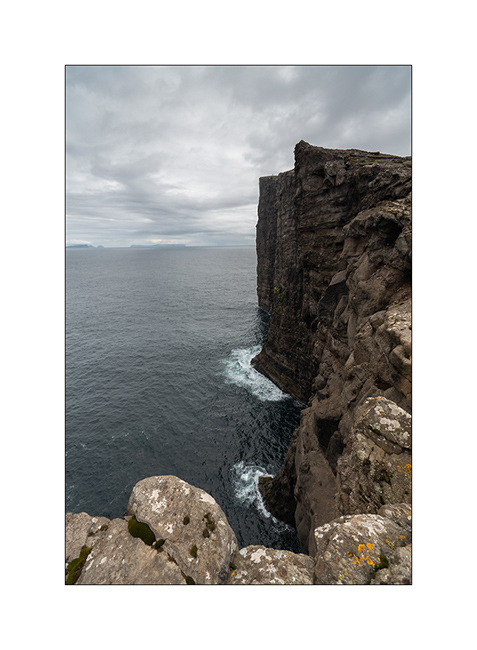
5. From the top, the panorama is breathtaking! This image is an panorama of 4 vertical images.

6. Traditional boat garage along the lake, on my hike back.

7. Continuing the road to the North, I discover this small village, just lovely… In the distance, the arch of Drangarnir.

8. And here is the second must-see spot: the Gasadalur waterfall. The small village of the same name was one of the most isolated of the Faroe Islands until the construction of a tunnel in 2006. Before, the only way to reach it during winter was the sea where a summary natural harbour allowed small boats to land by nice weather. In 1962, the village remained isolated for more than 5 consecutive months because of a series of Atlantic depressions.
The waterfall is 50 yards tall.
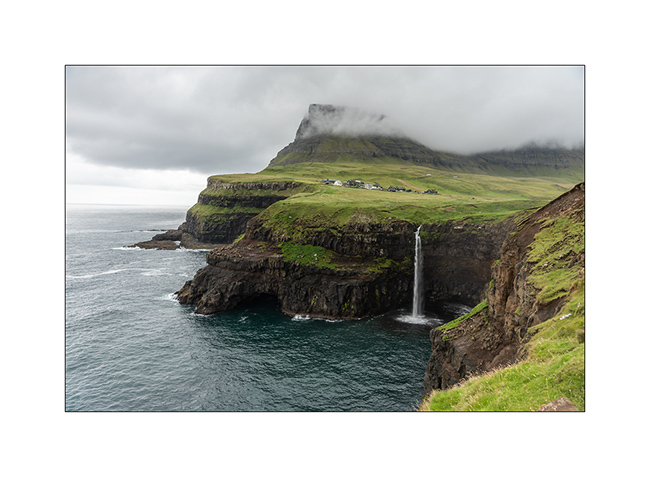
9. View from the top of the waterfall, with at the foot of the cliff, the rocks that allowed the landing…

10. First meeting with the puffin in the cliffs…
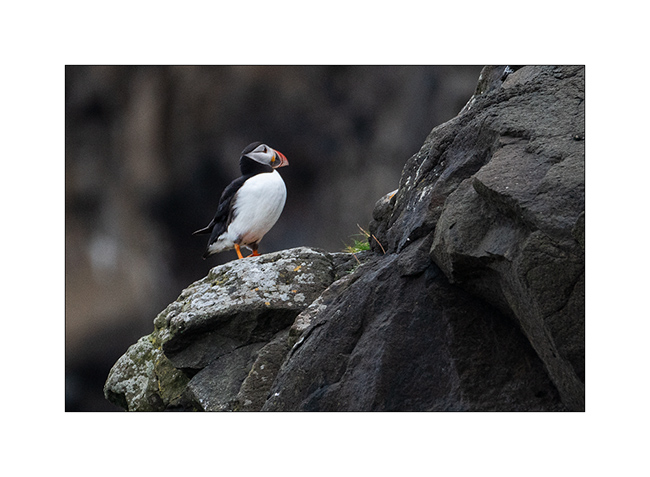
11. What a beautiful bird!

12. Here, people attach caravans so they cannot fly on windy days, that means everything!

13. Going up a fjord towards the village of Tjornuvik.
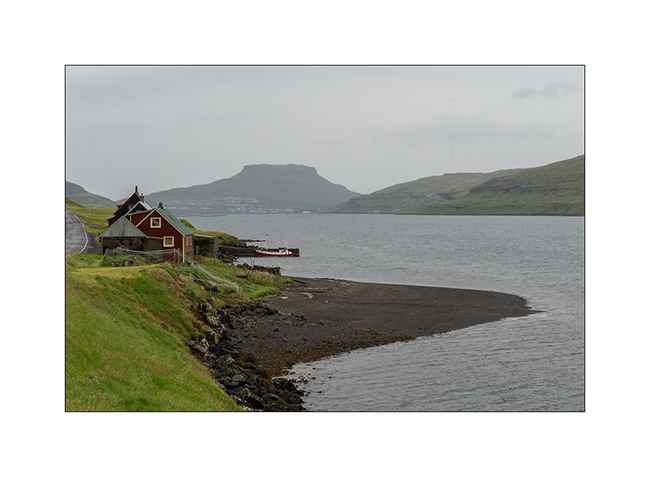
14. Waterfall along the VivaLaVida’s way.

15. Cliffs in the rain. The Faroe Islands have among the highest cliffs in Europe. Some are half a mile high.
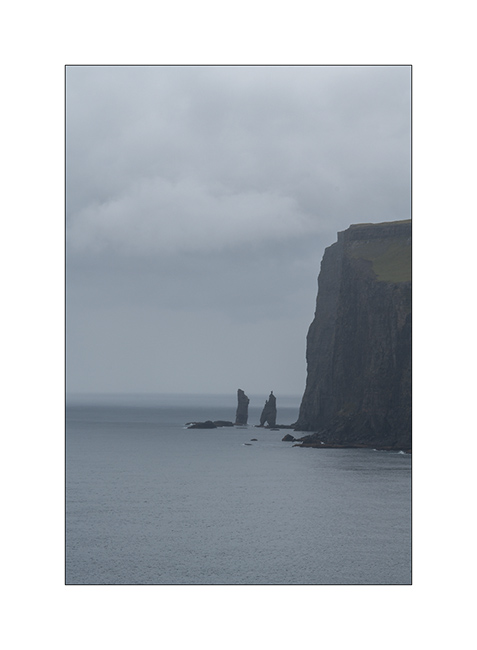
In the next update, I will show you the black beach of Tjornuvik and other parts of these beautiful islands. Stay tuned!
Faroes (I)
Having taken the boat from Hirtshals to Iceland, I decided to stop for three days to discover the Faroe Islands that attracted me for a long time. As I write this update from a small lost village, in the pouring rain, and don’t regret my choice. These islands are really beautiful, sheep heaths as far as the eye can see. In fact, there are only a few tens ofinches of humus on the substrate, sometimes basalt, sometimes black stone. The habitat is made of small villages of multicolored wooden houses scattered along the coast and located where there was an option of docking since it’s the Vikings who are the oldest colonizers of these islands. Here are some first pictures of VivaLaVida’s journey.
1. Before landing to the Faroe Islands, the ferry passed by the extreme Northern tip of the Shetland Islands.
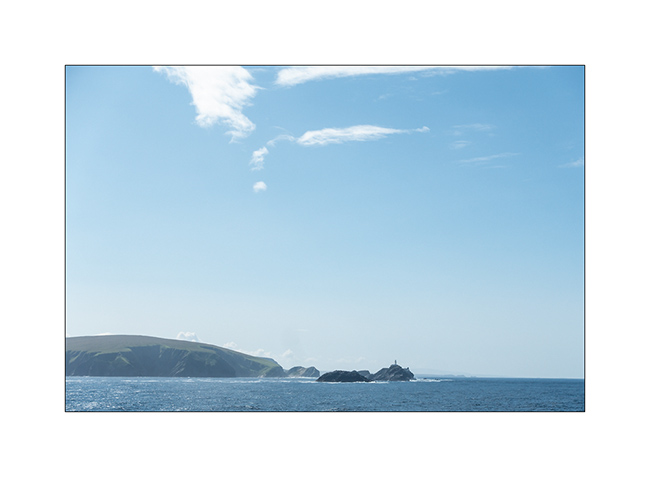
2. While VivaLaVida landed at night, a small walk from my camping spot makes me discover an impressive panorama!
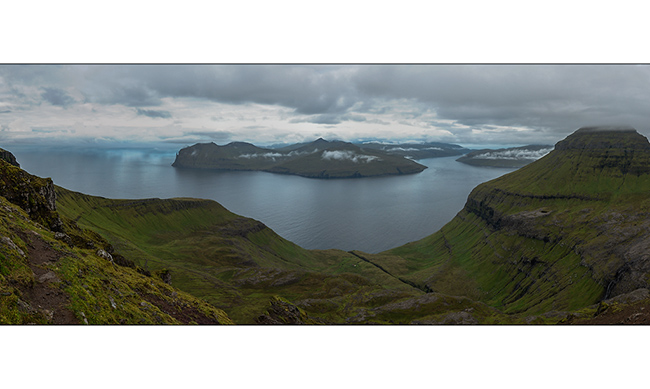
3. The day is announced dry and with some sun. Is it it coming from the South ?
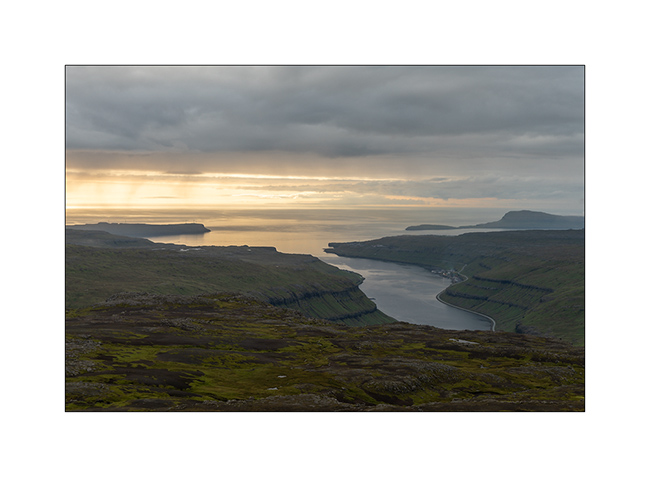
4. Sheep stable…
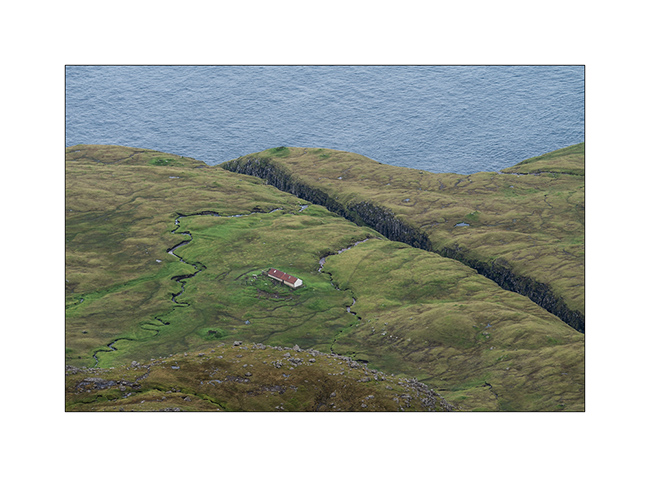
5. Each island is separated from its neighbor by one or more fjords.

6. Mix of rocks and mosses…

7. And here is the sun coming!
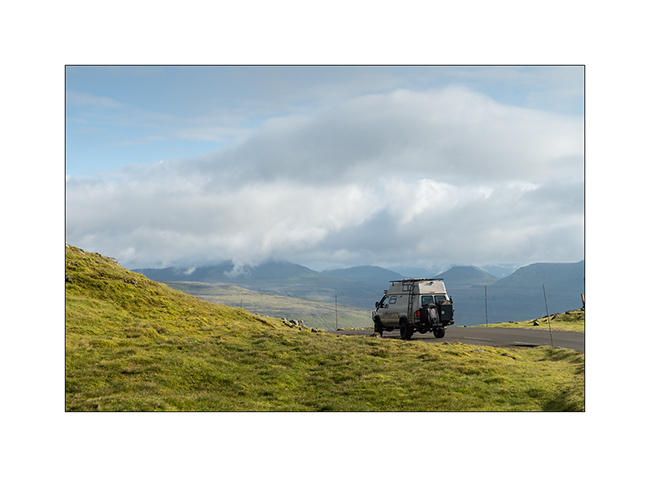
8. Going towards Saksund, VivaLaVida is driving along a fjord.
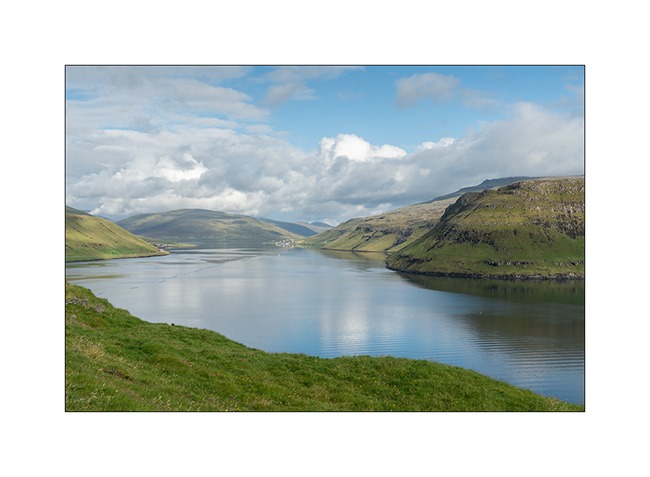
9. Saksund is a tiny hamlet, one of the first built on the main island, and still has several traditional very old houses.

10. Its old church.
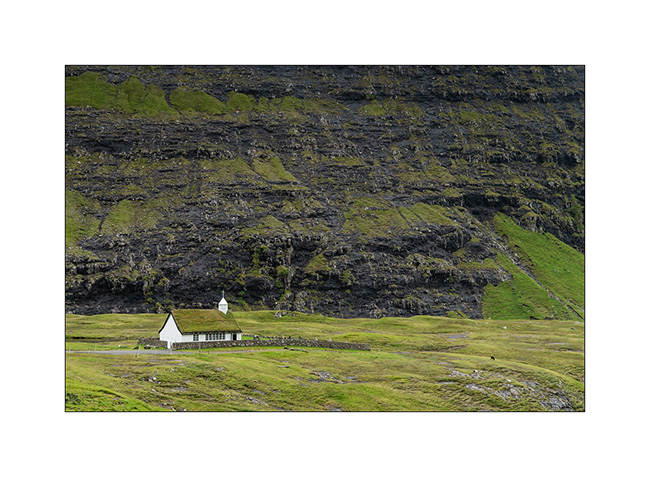
11. Specialty of these Northern countries, the roofs covered with moss and grass.

12. Window…

13. The village.
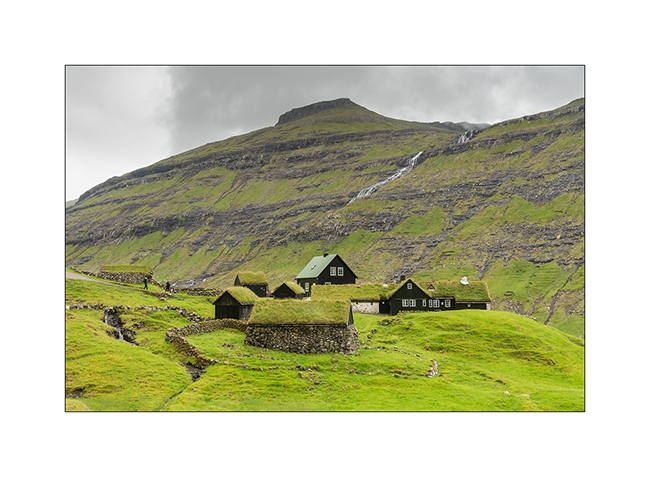
14. Boat garages a bit further along a fjord.
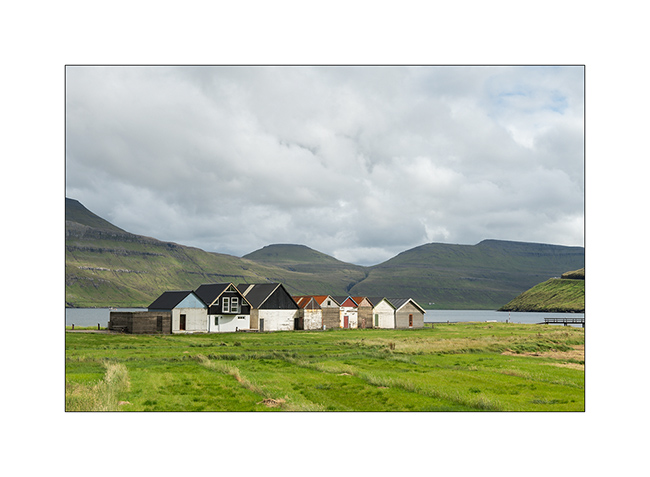
I will continue in a future update, just to avoid indigestion… 😉
Start…
After a few busy days before holidays, I left Emile and Isabelle who will join me in a few days and took the road to the North. There are 1’200 miles waiting for me to reach Hirtshals, at the Northern tip of Denmark, where leave the only ferry that joins the Faroe Islands and Iceland. Obviously not the most fun part of the trip but you have to do it…
1. Boondocking in Northern Germany.
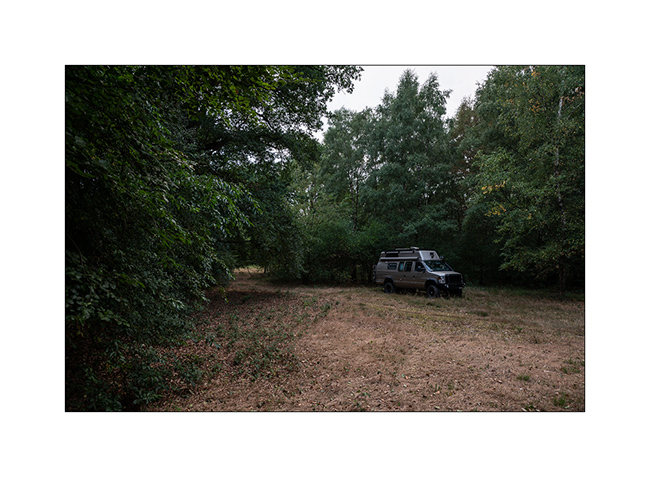
2. Arrived at destination in the middle of the afternoon the day before the ferry, I took the opportunity to discover an abandoned lighthouse in the middle of the dunes…
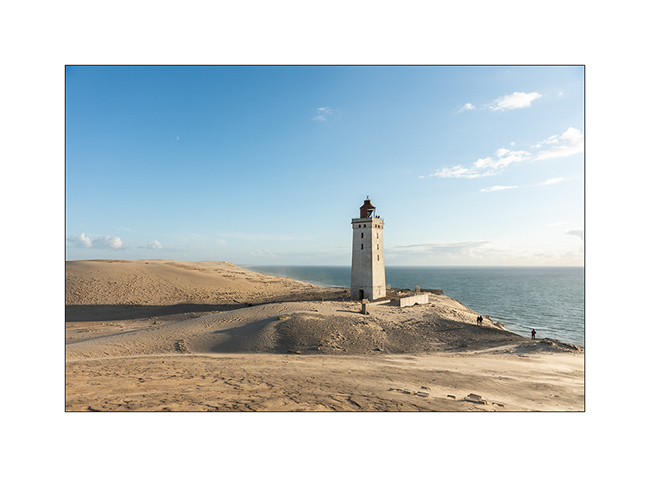
3. Enjoying a spectacular sunset on the North Sea.
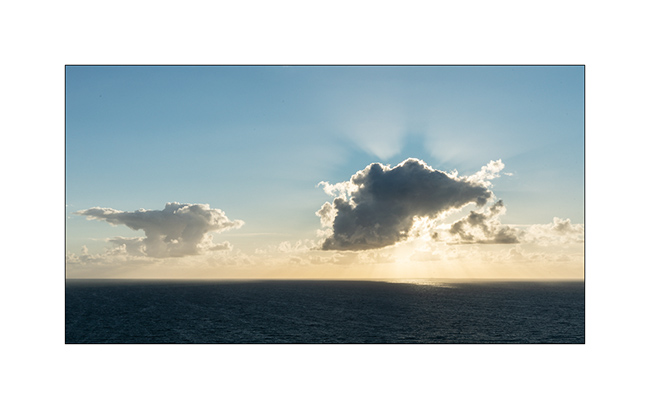
4. …

5. …
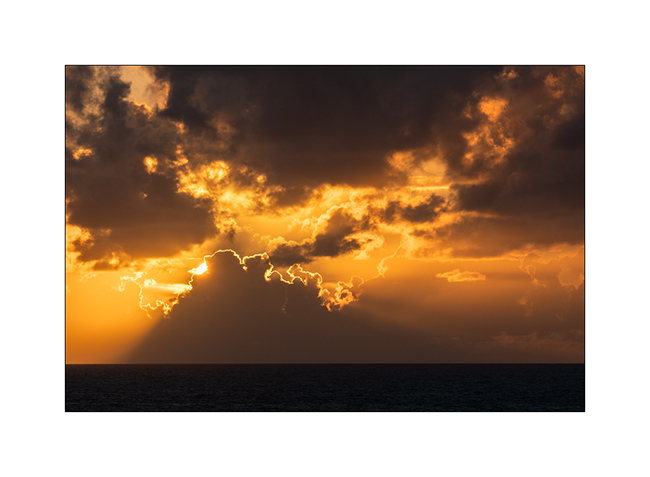
6. I then went to sleep on the beach, East of Hirtshals, where the sunrise was colorful.

7. …

8. After a visit to a local hairdresser, visit the Hirtshals lighthouse.
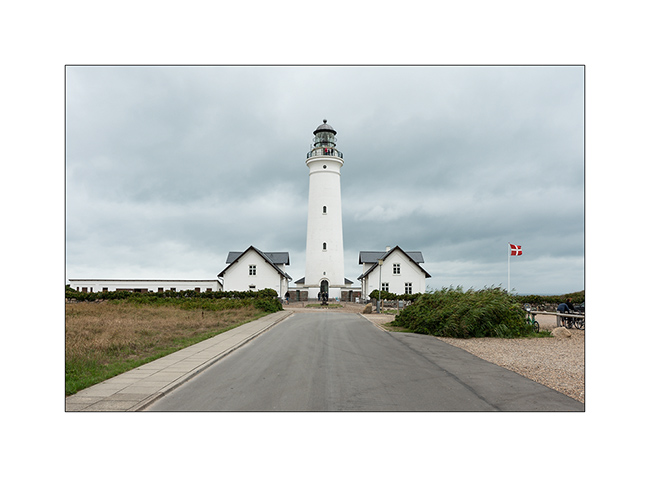
9. It’s then time to go in line for VivaLaVida to board.

10. Right on time, the ferry lifted anchor towards the Faroe Islands, with a good gale announced for the crossing…
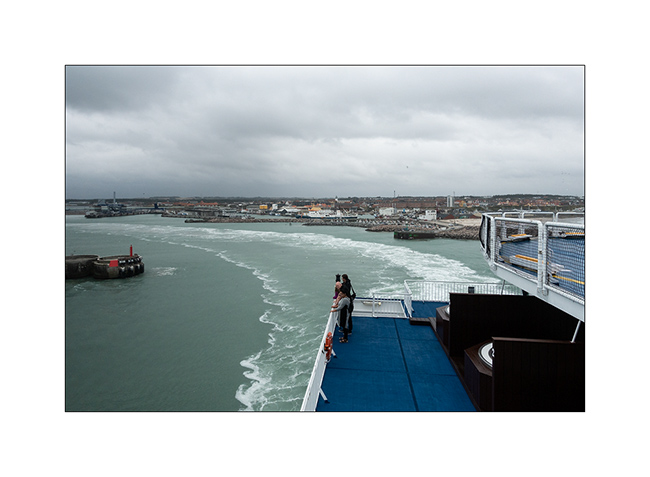
That’s it for this short update written on the ferry while it was beating quite a bit… 🙂
I will stop tomorrow for three days in the Faroes, to discover these islands that have attracted me for a long time…
To be followed soon !
Preparations
I had announced a future destination for VivaLaVida in the last article, it is time to unveil it: VLV will soon take the ferry to the Faroe Islands and Iceland!
It has been a long time since I wanted to go back there but it wasn’t planned for this year. The explosion of mass tourism in Iceland led Icelanders to legislate to preserve the fragile nature of their island. Wild camping is already banned on the South coast since 2016 and it seems that it would be soon extended to the entire country. We decided to go there before the regulations would interfere too much with VLV’s preferred way of travel.
Some of you know that Iceland really nmany more or less deep fords, the meltwater of the glaciers having no choice but to flow on the volcanic soil without humus on most of the island. It has been a long time since I wanted to equip VLV with a cyclonic pre-filter and it was an opportunity to create a snorkel to increase the fording capacity, nothing being available for the Ford E350 base.
The project was important because the vehicle isn’t designed to receive such an equipment. I first had to modify the filter air box by blocking the original air intake located behind the headlight, replacing it with a lateral opening in the driver’s side engine bay wall. Then, I had to design a part located in the room between the fender and the wall, going from the front end to the base of the windshield. There, an opening in the fender allows a pipe of diameter 110 mm to follow the windshield pillar to the pre-filter. All the parts were made of polyethylene, a solid material that welds rather well.
After nearly four weeks of work finishing each evening between 11 and 12, VivaLaVida’s snorkel is now up and running! Here are some pictures to show the main stages of the project.
1. The modified airbox.

2. The flange joining the engine bay wall.

3. Opening in the wall.
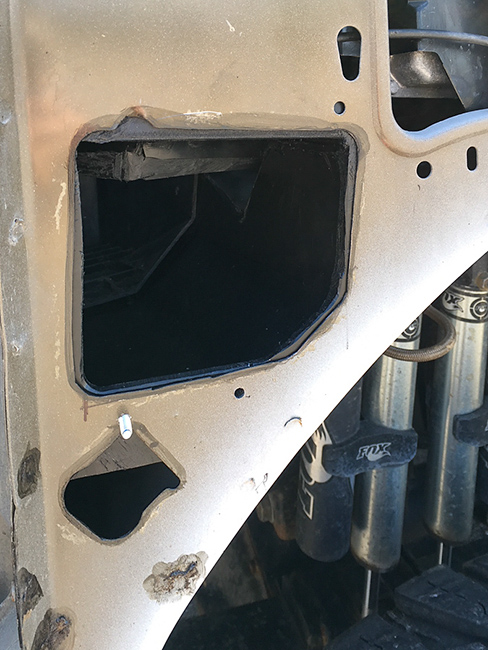
4. Intermediate part in preparation.

5. Ready to install with fender opening and body staples.

6. The pipe coming out of the fender and rising above the windshield.
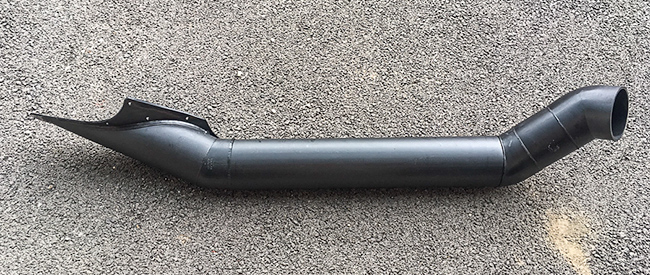
7. Final install on the fender.

8-10. The finished snorkel.
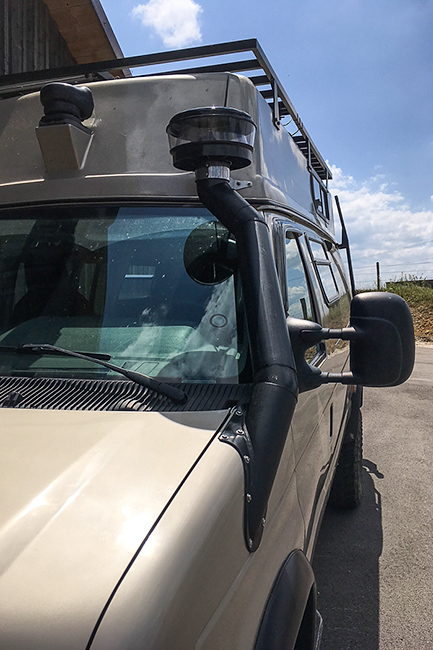
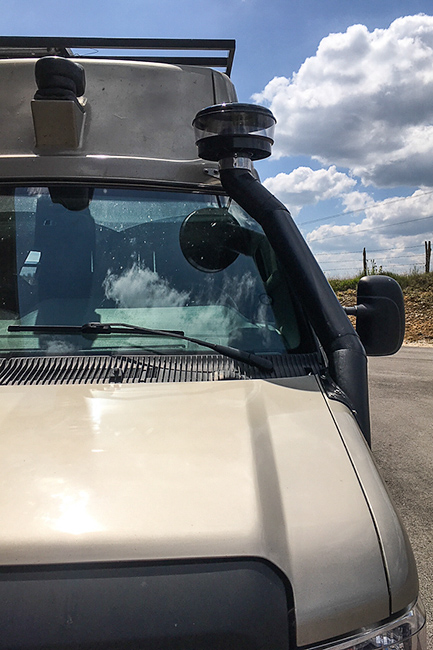
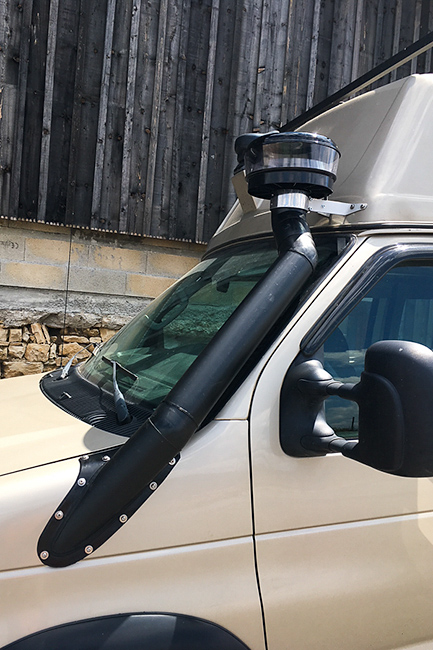
I also did other work on VLV: replacement of start and leisure batteries. For those, previously grouping 3 AGM batteries of 105 Ah each, I opted for two Lithium batteries of 90 Ah, equivalent to approx. 400 Ah AGM. It is a big investment but the reliability and the additional energy capacity associated with a much higher lifetime than lead batteries makes it possible to make profitable over a few years. I also had the heater checked to minimize the risk of breakdown and it turned out to be the time to do it; the burner was quite corroded. Finally, I had to quench all the air-vents from axles, transmission, etc. by raising them above the level of the doors in anticipation of deep fords, thus avoiding water to enter. And everything is not finished even if I start to see the end.
Departure to Denmark is set for August 15th and VivaLaVida should land in the Faroe Islands on the 19th. I will give you news around August 25th when I will pick up my family in Reykjavík for three weeks to discover together this wonderful Iceland…
So next to come soon! 😉

 D5 Creation
D5 Creation